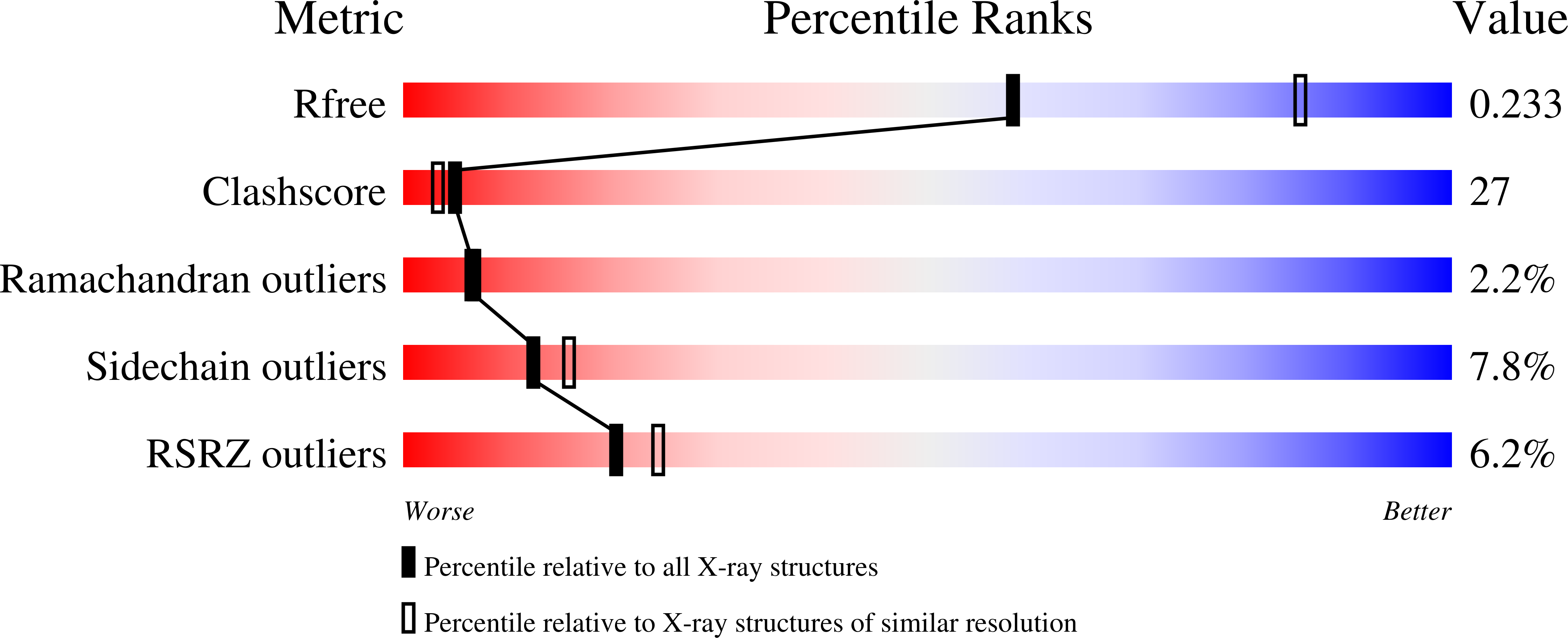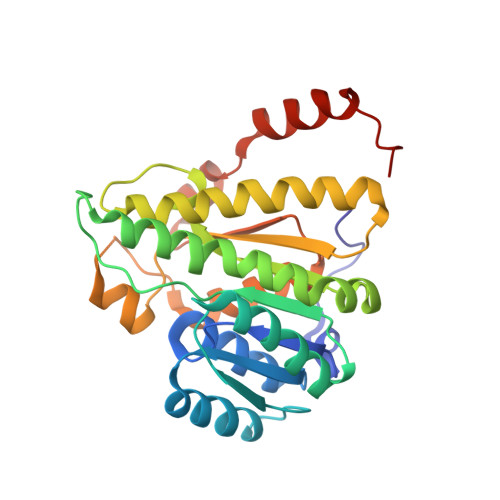Distinctive molecular inhibition mechanisms for selective inhibitors of human 11beta-hydroxysteroid dehydrogenase type 1.
Tu, H., Powers, J.P., Liu, J., Ursu, S., Sudom, A., Yan, X., Xu, H., Meininger, D., Degraffenreid, M., He, X., Jaen, J.C., Sun, D., Labelle, M., Yamamoto, H., Shan, B., Walker, N.P., Wang, Z.(2008) Bioorg Med Chem 16: 8922-8931
- PubMed: 18789704
- DOI: https://doi.org/10.1016/j.bmc.2008.08.065
- Primary Citation of Related Structures:
3D5Q - PubMed Abstract:
11beta-hydroxysteroid dehydrogenase type 1 (11beta-HSD1) catalyzes the NADPH dependent interconversion of inactive cortisone to active cortisol. Excess 11beta-HSD1 or cortisol leads to insulin resistance and metabolic syndrome in animal models and in humans. Inhibiting 11beta-HSD1 activity signifies a promising therapeutic strategy in the treatment of Type 2 diabetes and related diseases. Herein, we report two highly potent and selective small molecule inhibitors of human 11beta-HSD1. While compound 1, a sulfonamide, functions as a simple substrate competitive inhibitor, compound 2, a triazole, shows the kinetic profile of a mixed inhibitor. Co-crystal structures reveal that both compounds occupy the 11beta-HSD1 catalytic site, but present distinct molecular interactions with the protein. Strikingly, compound 2 interacts much closer to the cofactor NADP+ and likely modifies its binding. Together, the structural and kinetic analyses demonstrate two distinctive molecular inhibition mechanisms, providing valuable information for future inhibitor design.
Organizational Affiliation:
Department of Metabolic Disorders, Amgen Inc., 1120 Veterans Boulevard, South San Francisco, CA 94080, USA.
















